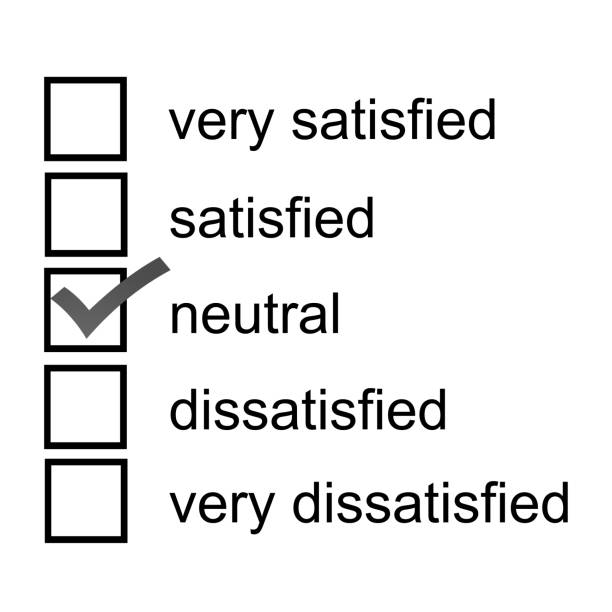Explore the nuances of Likert scales, a key tool in survey research

Introduction to Likert Scale
When you dive into the realm of survey research, one term you’ll inevitably encounter is the “Likert Scale”. A staple in many research methodologies, this scale is more than just a range of options on a questionnaire. Let’s take a journey through its nuances and the vast world it opens up in research.
What is the Likert Scale?
A Likert scale is a psychometric scale commonly involved in research that employs questionnaires. It is the most widely used approach for scaling responses in survey research, such that the term (often spelled “Likert scale”) is often used interchangeably with rating scale, although they are not synonymous. The scale allows respondents to specify their level of agreement or disagreement with a particular statement.
History and Development
The Likert Scale is named after its creator, Rensis Likert, who developed this method in the early 1930s. Rensis was focused on enhancing the accuracy and reliability of surveys, and his scale seemed to be the perfect solution for gauging opinions and sentiments effectively.
Delving into the Likert Scale Structure
This tool isn’t just a simple set of options. It’s a carefully crafted instrument, designed to extract the most honest and clear responses from participants.
Basic Components
At its core, the Likert Scale has a set of answer options that range from one extreme to another, like “strongly disagree” to “strongly agree.” Typically, it has five or seven points, though there are variations.
Variants and Their Applications
There are several versions of the Likert Scale, adapted for diverse needs. For instance, a ‘semantic differential scale’ might be used when the researcher wants to identify the connotations of certain products or brands.
Advantages of Using the Likert Scale
Every instrument has its strengths, and the Likert Scale is no different. Over time, its benefits have solidified its reputation in the research world.
Credibility and Relevance
Likert scales provide a higher level of measurement compared to binary/dichotomous (yes/no) responses. This results in richer data and more insightful findings.
Ease of Use and Interpretation
Its simplicity is one of its most significant assets. Respondents find it intuitive, and researchers can analyze the results with relative ease.
Disadvantages and Criticisms
While versatile, the Likert Scale isn’t without its critics. Some concerns often arise in its application.
Common Concerns
Researchers sometimes question the equidistance of the scale, arguing if the difference between “agree” and “strongly agree” is the same as between “neutral” and “agree.”
Addressing Limitations
By customising the scale, considering the target audience, and pre-testing the instrument, many of these concerns can be addressed, ensuring the data’s reliability.
Likert Scale in Modern Research
Its inception in the 1930s doesn’t mean the Likert Scale is outdated. In fact, it’s more relevant than ever.
Real-world Applications
From customer feedback forms in a cafe to massive global studies on climate change perceptions, the Likert Scale is everywhere.
Technological Advancements
With the growth of digital platforms and software, deploying and analysing Likert Scale surveys have become more streamlined and efficient.
Creating a Likert Scale Survey
Crafting a robust Likert Scale survey involves more than just choosing a set of statements.
Steps and Guidelines
1. Begin with clear, unbiased statements.
2. Decide on the scale range (5-point, 7-point, etc.).
3. Pre-test the survey for clarity and understanding.
4. Launch and monitor for consistent responses.
Common Mistakes to Avoid
Overloading a survey with too many items or leading questions can distort results. Always aim for clarity and neutrality.
Understanding Likert Scale Data
Collecting data is just the first step. The magic lies in the analysis.
Data Analysis Techniques
The mode, median, and frequency distributions are commonly used techniques. Advanced researchers might dive into factor analysis for deeper insights.
Interpretation and Reporting
Understanding the patterns in the data and accurately reporting them is key. Visual aids like bar graphs can be invaluable here.

FAQs
- What is the most common version of the Likert Scale?
The 5-point scale, ranging from “strongly disagree” to “strongly agree”, is the most prevalent.
- How do I choose between a 5-point and 7-point scale?
Consider your target audience and the depth of data you desire. A 7-point scale can offer more granularity but might be overwhelming for some respondents.
- Is the Likert Scale suitable for all types of research?
While versatile, it’s best suited for attitudinal research. For behavioural insights, other tools might be more appropriate.
- What are the main criticisms of the Likert Scale?
Concerns about its equidistance and whether it truly offers interval data are common criticisms.
- How has technology impacted Likert Scale surveys?
Digital platforms have made deploying and analysing these surveys faster and more efficient.
- Are there alternatives to the Likert Scale?
Yes, other scales like the Semantic Differential Scale or Thurstone Scale are alternatives, each with its own advantages.
Conclusion
The Likert Scale has withstood the test of time, proving its worth as an invaluable tool in the research world. Its adaptability, ease of use, and the depth of insights it offers make it a favorite among many researchers. As with any tool, its effectiveness depends on its application. Used wisely, it can unlock a treasure trove of data, driving meaningful conclusions and actionable insights.
External Links/ Sources:
